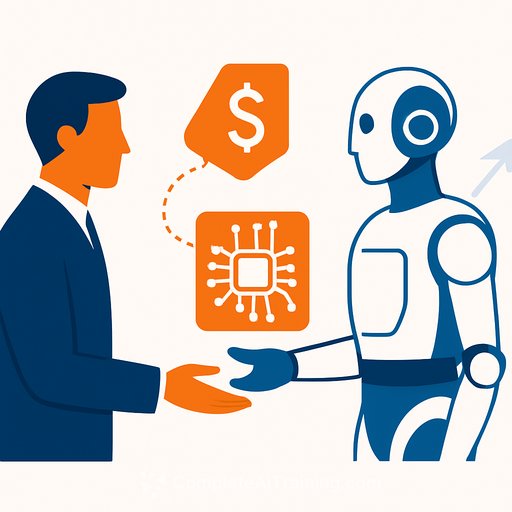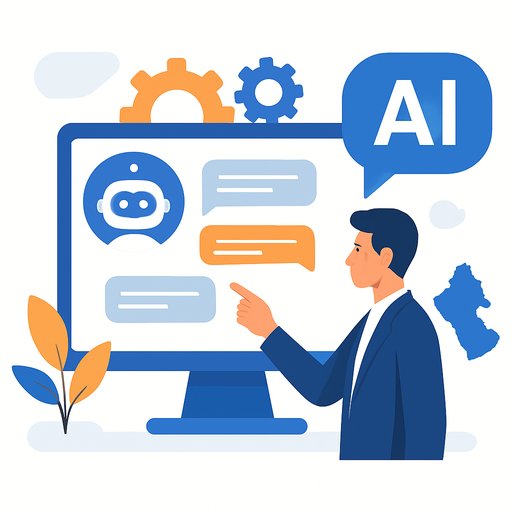Enterprise AI Sales: The Playbook Just Changed
Posted November 21, 2025
The classic enterprise motion-educate, pilot, business case, security review, go live-has been compressed. Buyers show up informed, hungry to try, and impatient for value. They expect short implementation cycles, early ROI, and airtight compliance from day one.
If you lead Sales or Support, the bar moved. Here's what changed, and how high-performing teams are winning deals under these new conditions.
What's Changed
More buyers are in market with dedicated AI budgets, and boards are pushing for near-term results. Replacement cycles shrank from years to months. Your window to prove value is short.
Buyers are self-educating. Many skip full RFPs, shortlist one or two tools, and want to test immediately-often self-serve. Long sales motions and heavy implementations get cut early.
Implementation queues are backed up. FOMO is real: leaders want their "AI win" and don't want to re-invest in a second tool if the first one disappoints. You often get one shot.
Differentiation on features is thinner. With AI, new entrants catch up fast. Speed and reliability of outcomes matter more than a long feature list.
Trust has a new definition. It's not just audit logs. Buyers want proof your system does the work correctly, can explain how, and won't break controls. Expect deeper compliance checks, including red-teaming, before production access.
How Leading Teams Close AI Deals
1) Brand early, or get boxed out
In crowded categories, buyers default to the names they recognize. Land a few visible logos, build a community of power users and enablers, and publish outcomes. Social proof now does half the selling for you.
2) Demos do the heavy lifting
Real demos beat glossy videos. Show your product doing complex, human-level work-and do it live. Voice agents that handle negotiations or support calls convert because they feel like a believable upgrade over a human workflow.
Great teams shifted the POC moment into the demo. They run in a sandbox that mirrors production with real or synthetic customer data. The buyer sees value in the first meeting, not after a six-week trial.
Example: procurement agents that turn a weeks-long purchase request into a 5-minute chat, then route to sourcing, negotiation, and compliance agents. No one misses manual SAP entries or email tag.
3) Treat security as part of the product
Come prepared with crisp answers: Do you train on our data? How do you log prompts and outputs? What guardrails reduce hallucinations and prevent policy breaches? How is access scoped and revoked?
Adopt recognized frameworks and testing. Many buyers now expect agent-level controls, red-teaming, and ongoing monitoring. If you need a starting point, review the NIST AI Risk Management Framework for how to structure risk and safeguards. NIST AI RMF
4) Lead with outcomes-and price on them
The clock to ROI has collapsed. More than half of buyers want positive ROI within three months; some expect it immediately. Start with a narrow workflow where results are measurable weekly.
Make pricing align with outcomes. In support, tie pricing to deflection or tickets resolved by AI. Report CSAT, handle time, and resolution rates week over week. If a big upfront commitment stalls the deal, land with outcome-based terms and earn expansion with performance.
The GTM Team Is Changing
Sales is more technical. AEs must explain how agents actually do work, not just who uses the app. Some teams merge AE and Solutions Engineer to speed decisions and create a cleaner buyer experience.
Implementation leans on forward deployed engineers. They wire data, tune prompts, and adapt workflows to the customer's environment so value shows up fast.
Post-sales success is now product-like. Teams design prompt logic, set data integrations, monitor performance, and feed insights back to GTM and product. Titles vary-Agent PM, Solutions Architect-but the mission is the same: make the deployment succeed and expand usage.
As pricing shifts to usage or outcomes, adoption can't be an afterthought. Reps are also automating their own work with tools for research, outbound, scheduling, and notes-so they can spend more time with customers instead of CRM busywork.
Action Plan for Sales and Support Leaders
- Shorten time-to-proof: move the "wow moment" into a live demo with realistic data.
- Package a narrow, high-impact wedge: one workflow, one metric, one owner.
- Pre-bake compliance: docs, controls, logging, data policies, and red-team results.
- Offer outcome-based pricing paths to de-risk initial commitments.
- Stand up an "Agent Success" function focused on prompts, integrations, and expansion.
- Instrument weekly impact: ROI dashboards tied to the buyer's KPIs.
- Enable your reps with AI for research, outreach, and notes to free up customer time.
Enablement: Skill up your team
If your frontline can't demo, configure, and explain AI workflows, deals stall. Level up training and playbooks so AEs, SEs, and Success can run fast, technical conversations with confidence.
For job-specific learning paths that help Sales and Support teams work smarter with AI, see these resources: Courses by job
Where This Lands
Winning teams ship products that actually do the work, wrap them in governance that calms risk teams, and prove value in the first meeting. They update their GTM the same way they update product: fast, iterative, and grounded in customer outcomes.
The signal is simple: show the work, show the controls, show the ROI-quickly. Do that, and you won't be fighting for budget. You'll be setting the standard others have to beat.
Your membership also unlocks:









